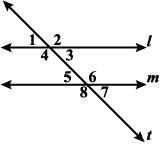
Mathematics, 27.11.2019 20:31 nate102201
Assume that you invest $500 dollars into an account that pays continuous interest at a rate of 3% and a friend of yours invests $250 dollars into an account that pays monthly interest at a rate of 4%. will there be a time that both your friend and you will have the same amount of money in your accounts? if so, after how many years will that happen? what does these two investments tell you in the long run?

Answers: 2


Other questions on the subject: Mathematics

Mathematics, 21.06.2019 14:00, jprado01
Colin listed his assets and liabilities on a personal balance sheet. colin’s balance sheet (august 2013) assets liabilities cash $1,500 credit card $500 stocks $800 rent $800 car $5,000 car loan $1,200 coin collection $1,200 student loan $5,000 total total which statement is true about the total assets and the total liabilities? the total of the assets and the liabilities are the same. the total of the assets is greater than the total of the liabilities. the total of the assets is less than the total of the liabilities. the total of the assets cannot be compared to the total of the liabilities.
Answers: 2


Mathematics, 21.06.2019 21:30, bandzswagg123
Zack notices that segment nm and segment pq are congruent in the image below: which step could him determine if δnmo ≅δpqr by sas? (5 points) segment mo ≅ segment qr segment on ≅ segment qp ∠ n ≅ ∠ r ∠ o ≅ ∠ q
Answers: 3
You know the right answer?
Assume that you invest $500 dollars into an account that pays continuous interest at a rate of 3% an...
Questions in other subjects:







Mathematics, 18.09.2021 01:30


Mathematics, 18.09.2021 01:30





